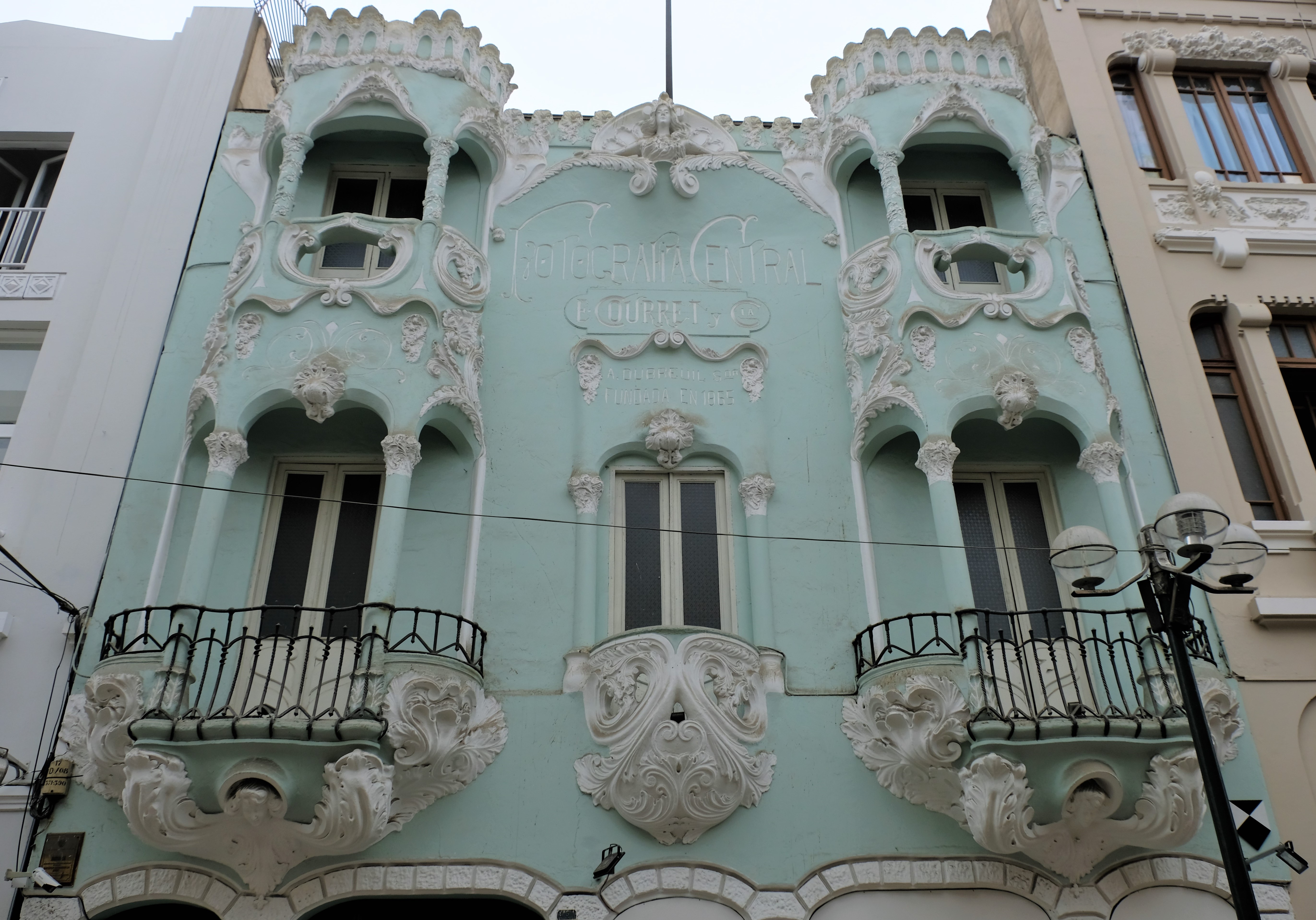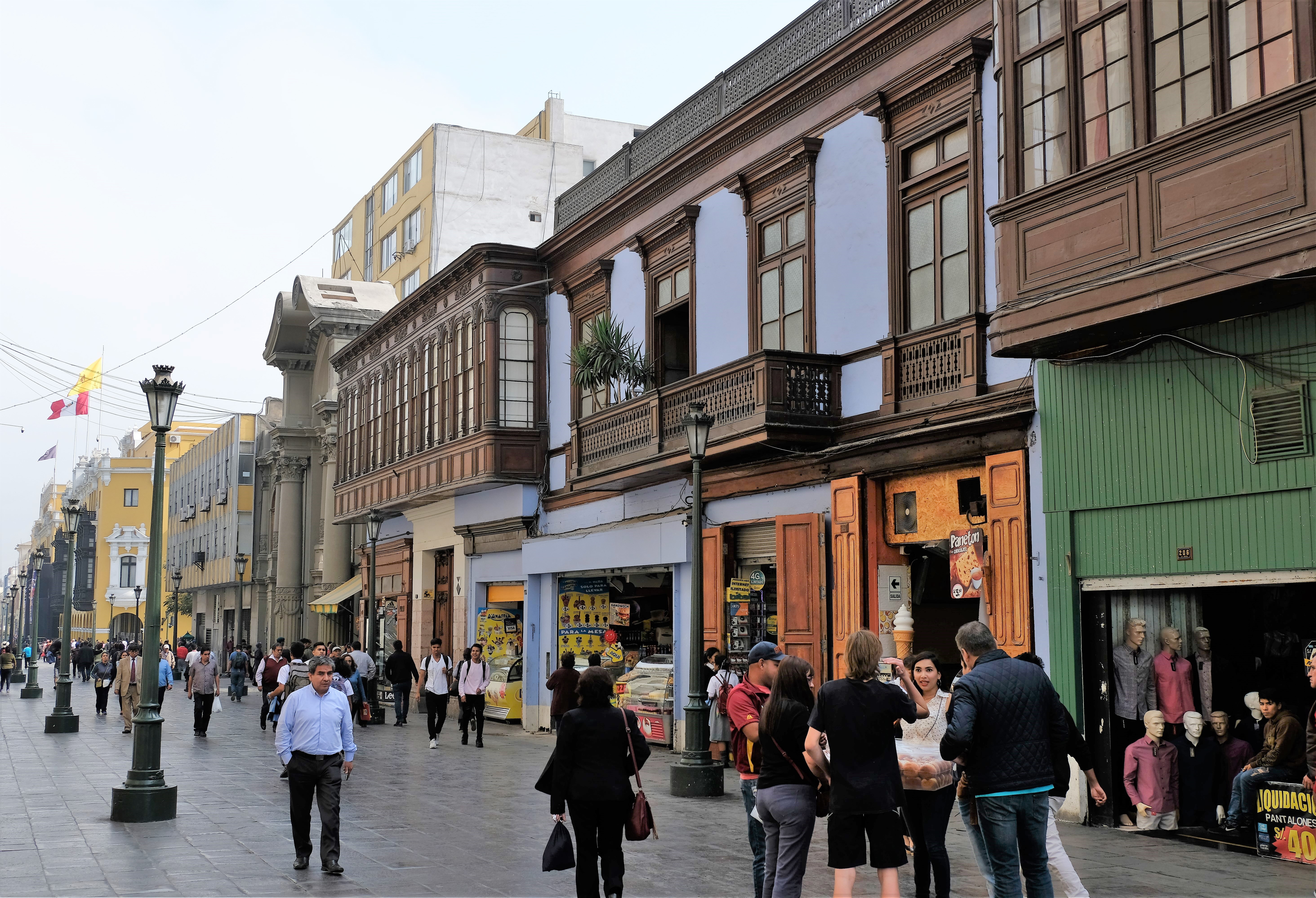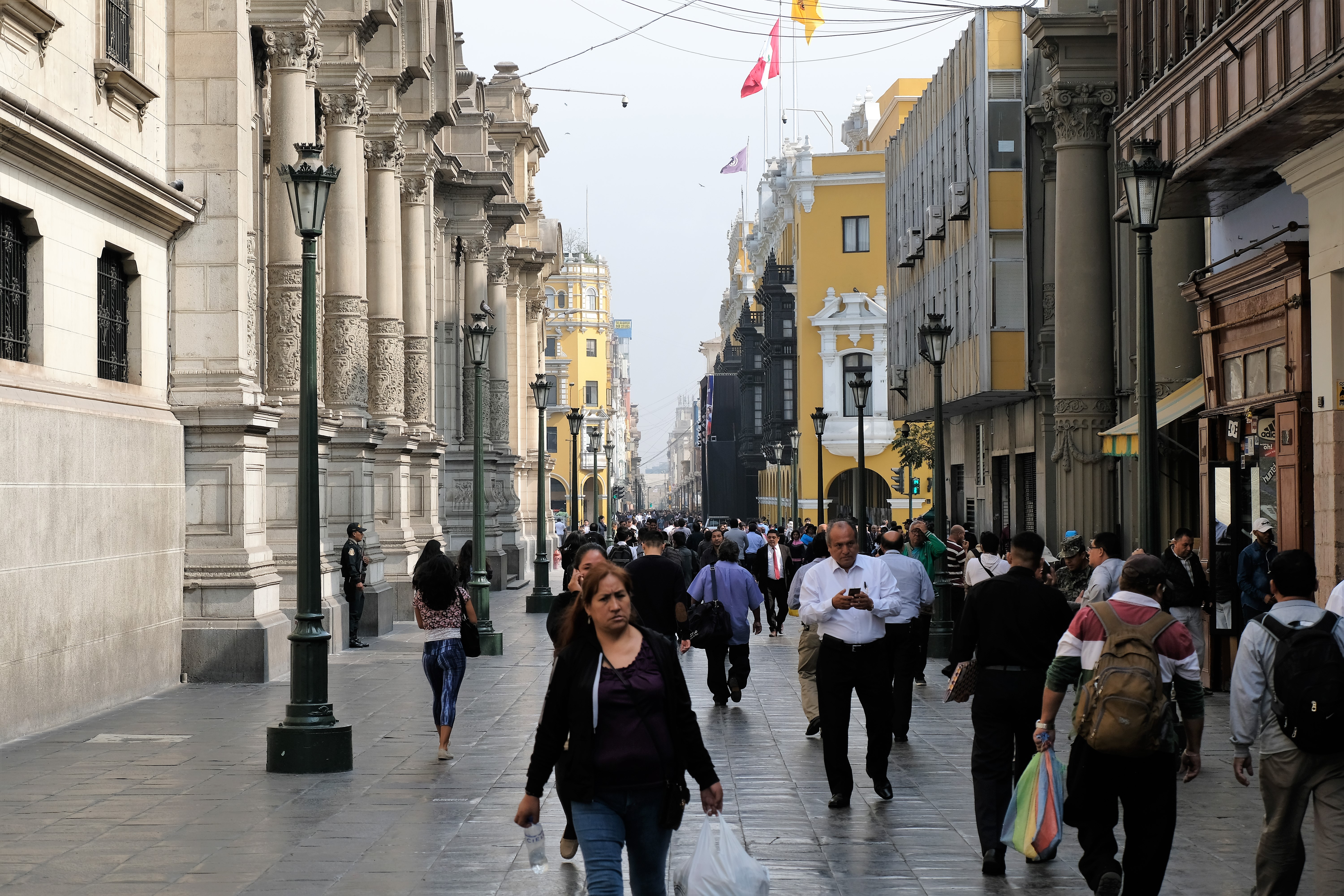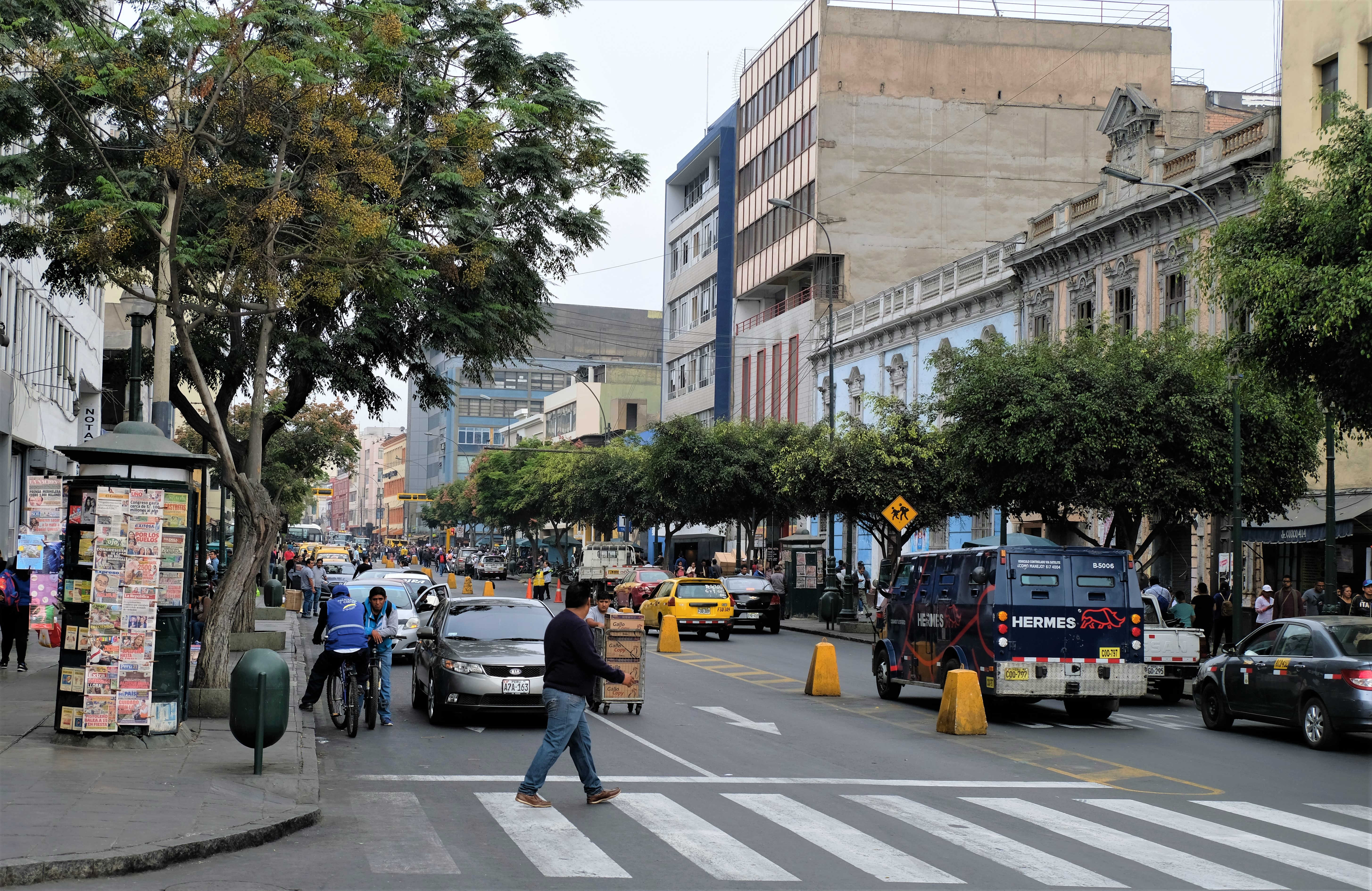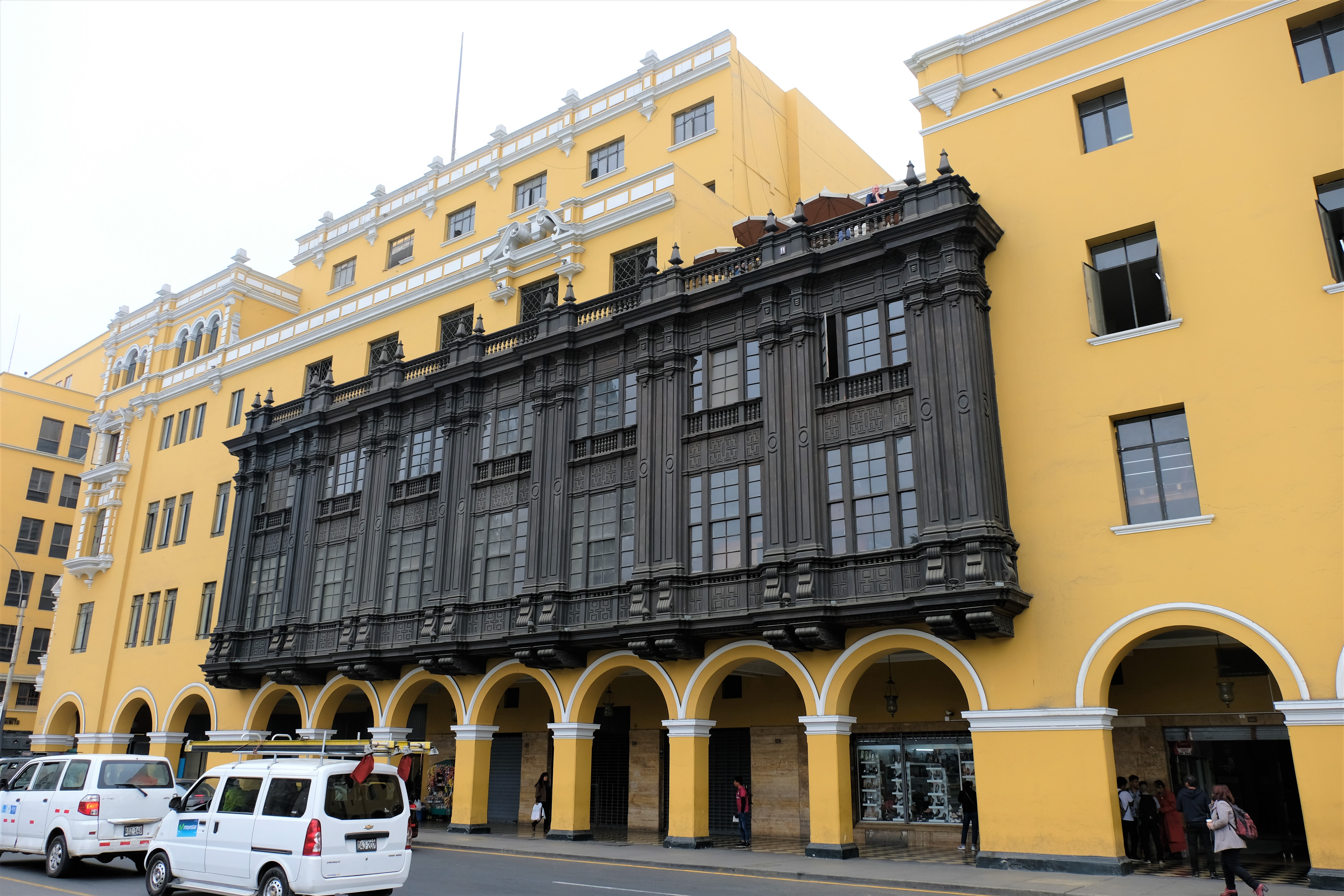The Historic Centre of Lima was on the agenda for day two, known locally as Centro Historico. Obviously, the historic centre has a strong Spanish influence, with the Spanish conquering the region in the 16th century and making Lima its capitol of the region. With the arrival of the Spanish came the end of the Inca Empire; the largest pre-Columbian empire in the Americas. Peru was held under Spanish control until it claimed independence in 1821. However, it would only fully obtain its independence in 1824. Between these dates is known as the Peruvian War of Independence, of which the Battle of Ayacucho proved to be the decisive battle.
Getting to the Historic Centre of Lima
All of the reception staff at my hotel (Hotel Las Palmas) were very helpful giving me directions to get to Lima’s historic centre. When possible, I prefer to walk, or take public transport. It gives me a greater personal sense of the place, the people and the vibe. I had to get a bus less than 100m North of the roundabout/traffic circle Miraflores Central Park (I have a picture of it in my previous blog post). The 302 or 303 takes you from Miraflores all the up to the Centro Historico, simple – taking about 45-60 minutes. To tell the truth, I always get slightly apprehensive using public transport, especially the first time – the more I use it the apprehension subsides. As my time passed in Peru I use it so many times it became second nature, like I was in London.
On a slight tangent
Reason for my anxiety is simple; in places where I am familiar i.e. Europe, I’m confident that should I take the wrong bus/train I can easily get back on track. In addition, I’m more au fait with good and bad areas; not just by name but can more easily identify them visually. All cities have good and bad areas, that’s not me bad mouthing Lima. Furthermore, in Europe and Africa it is more likely that more people will know English making it easier to get clarification on where I am and where I want to go. These disquiet feelings are my problem and have no reflection on the city and the people – of any country for that matter.
I hold my hands up when it comes stereotyping, even though I’ve worked on this for more than 20 years! Unfortunately, it is so easy to associate poor with “unsafe”. This way of thought is so contrary to my experiences whilst traveling e.g. Thailand and Vietnam are prime examples. Peru and Bolivia made me feel guilty of these remnant stereotypes I was harboring deep down. I sure hope that by the time I’ve finished writing about my time in Peru and Bolivia that I do it justice. Their countries are filled with beautiful sites and people. That’s not to say I wasn’t cautious and continue to be so when I travel. What I can say with utter certainty, is that, my view of the world has changed. I’ve learnt lessons of the mind and heart that will live with me forever.
Anecdote – Sim card
I tried to get a sim card for my phone in Miraflores without success. Even with the suggestions from my hotel I couldn’t find anywhere selling them. The other suggestion was to try around the historic centre, success! My UK Vodafone sim is free to use in many countries, not all. In the countries where I pay for additional charges, I get sim card as soon as possible; it’s so easy to wrack up a lot of unnecessary costs, especially data costs. Claro had a cheap sim and I was up and running in under 10 minutes – it took going to three stores, but they were all close to each other. There must be a place near Miraflores, I just didn’t find it.
Historic Centre of Lima / Centro Historico
The Historic Centre of Lima centres around Plaza Mayor de Lima. It used to be called Plaza de Armas, it’s the oldest public space in Lima. Arriving there you could be mistaken for thinking you’re in Seville or some other Spanish town. Though the journey on the bus to Centro Historico takes you through the “real” Lima. That’s not a euphemism; the rest of Lima is a mix of the old (early 20th century) and new, the everyday commuters getting through life like any other city. It’s like comparing the Gothic Quarter of Barcelona to the rest of the city. Here, quaint yet lavish buildings (16th-17th century) painted in vivid colours (lots of yellow) boarder the lush green grass of Plaza Mayor de Lima.

Background to Lima
Lima gets its name from the word Limaq; the name given to the region by the indigenous people – though the origins of the word Limaq isn’t known, it acquired the it over time. It was Francisco Pizarro who established Lima as the capitol of the city which grew into what we know today. After the Peruvian War of Independence, Lima became the capitol of the Republic of Peru. As the capitol city, Lima Metropolitan Area is is inhabited by 1/3 of Lima’s population, around 9 million people.
Before the Spanish conquistadors, Lima was occupied by the Ychsma group of indigenous people, who were incorporated into the Inca Empire. It was Francisco Pizarro who defeated the last Inca Emperor, Atahualpa, effectively ending the Inca civilization. This defeat didn’t initially deter the Inca’s from mounting counter attacks afterwards, however these would prove to be futile; a combination of the Spanish technology, along with the Inca’s being beset by disease brought to their shores by the Spanish.
Lima’s key dates
1687 – A large earthquake struck the city destroying most of the city. This coincided with economic challenges/competition from other South American cities like Buenos Aires
1746 – Lima is hit by another earthquake. Along with the devastation economic changes/reforms meant the city lost control of much of its economic income, most notably the mining in upper Peru
1821 – Declaration of independence signed leading to the Peruvian War of Independence, culminating in independence in 1824
1940 – Another big earthquake strikes destroying most of the city (predominantly built with adobe and quincha). At this state the population was around 600 000. Rebuilding commence attracting people from the rural regions of the country. The new city expanded, radiating out with the Historic Centre as its epicentre
The sites of Historic Centre of Lima
The area is packed with interesting sites, mostly clustered around the circumference of Plaza de Mayor of Lima. Standing in the plaza you can do a 360-degree spin and every building you see is of significance. Summing up my day, I knew there wasn’t enough time to see everything in one day. Also, not everything was open nor is everything open to the public. That being the case, I could have easily sat in the plaza for hours simply watching the people. I’d say for anyone who is restricted for time, you can get as much enjoyment walking about and taking in the sites around the plaza. The colourful and ornate buildings are quite beautiful.
About the buildings, their architectural signature is their balconies; a charming feature of artistically carved wood. They jut out of the building like an afterthought, making them a focal point to express the owner’s wealth. Around the plaza are the most elaborate buildings, but this style of dotted throughout the peripheral roads with some absolute gems. Considering Lima has been hit by 3 large earthquakes the historic centre looks untouched since the 16th-17th century. Surrounded by its colonial past, the people of Peru have embraced this history adding a touch of their own. Peru is not a wealthy nation, they are proud, very proud. This area is kept in mint condition, with lush lawns, exceptionally well-maintained historical buildings and public spaces filled with an effervescent vibe.
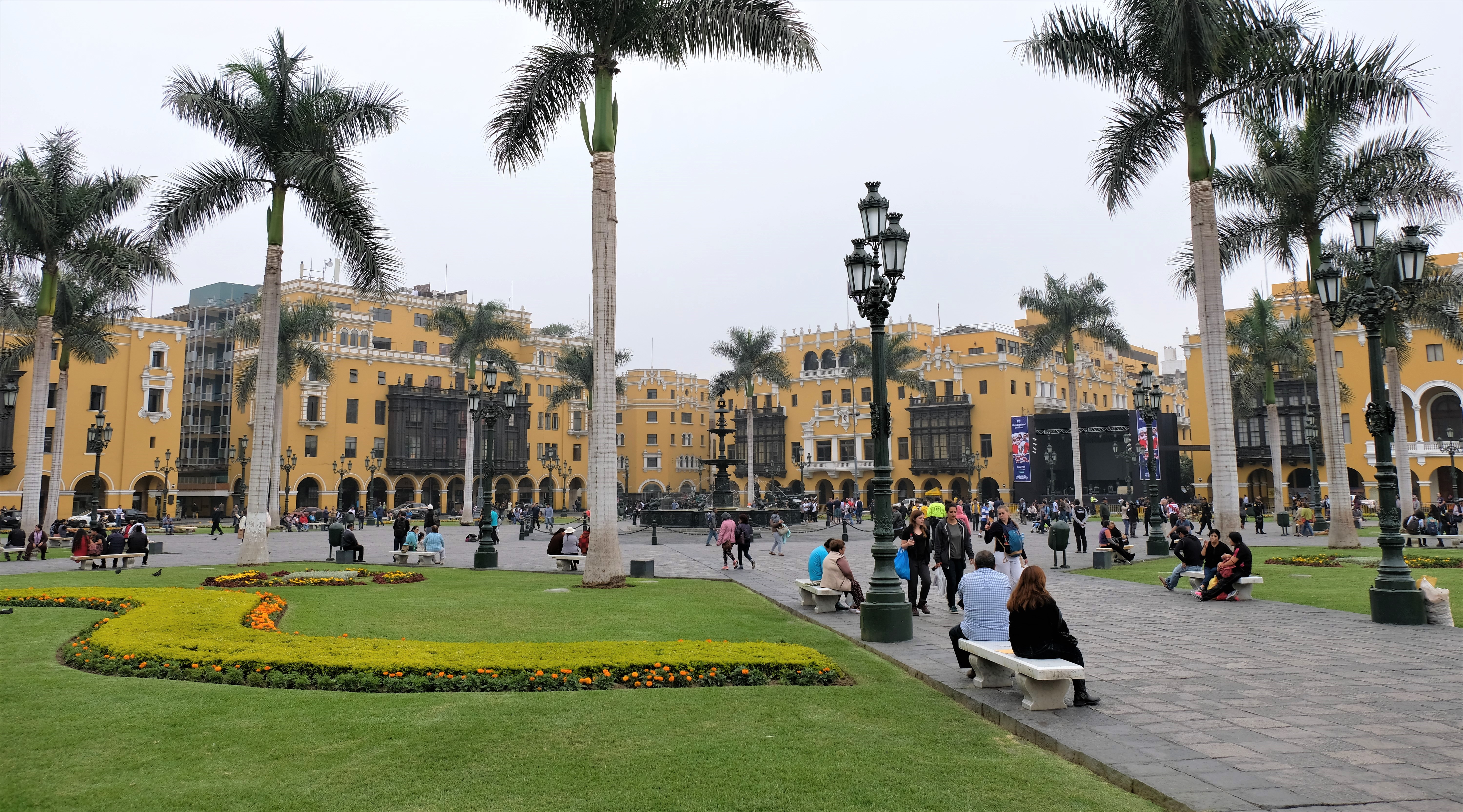
Archbishop’s Palace of Lima
Officially the residence of the Archbishop of Lima, therefore it is also the administrative headquarters for the Roman Catholic Archdiocese of Lima. Contrary to it’s looks the building isn’t that old, it was opened in 1924. The confusion is in its styling, keeping with the theme and look of the rest of the buildings around Plaza Mayor de Lima; neo-colonial architectural. It has been located in the same place since 1548 (I think), exactly why the old building was demolished I don’t know (even after doing some research – if anyone knows do let me know please).
From an ornated yet earthly exterior, the interior could be more strikingly different. Through the main entrance you are awash with bright yellow, framed with white cornices and architraves. Separating the yellow and white is dark varnished wood balustrades and pillars. Cascading down from the second floor to the entrance is rich red plush carpet – like the rose line leading from the sky down to earth. The entrance is flooded with light from the huge skylight above. Not just any skylight, a stunning French stained glass piece of art; large enough and beautiful enough to grace any basilica.

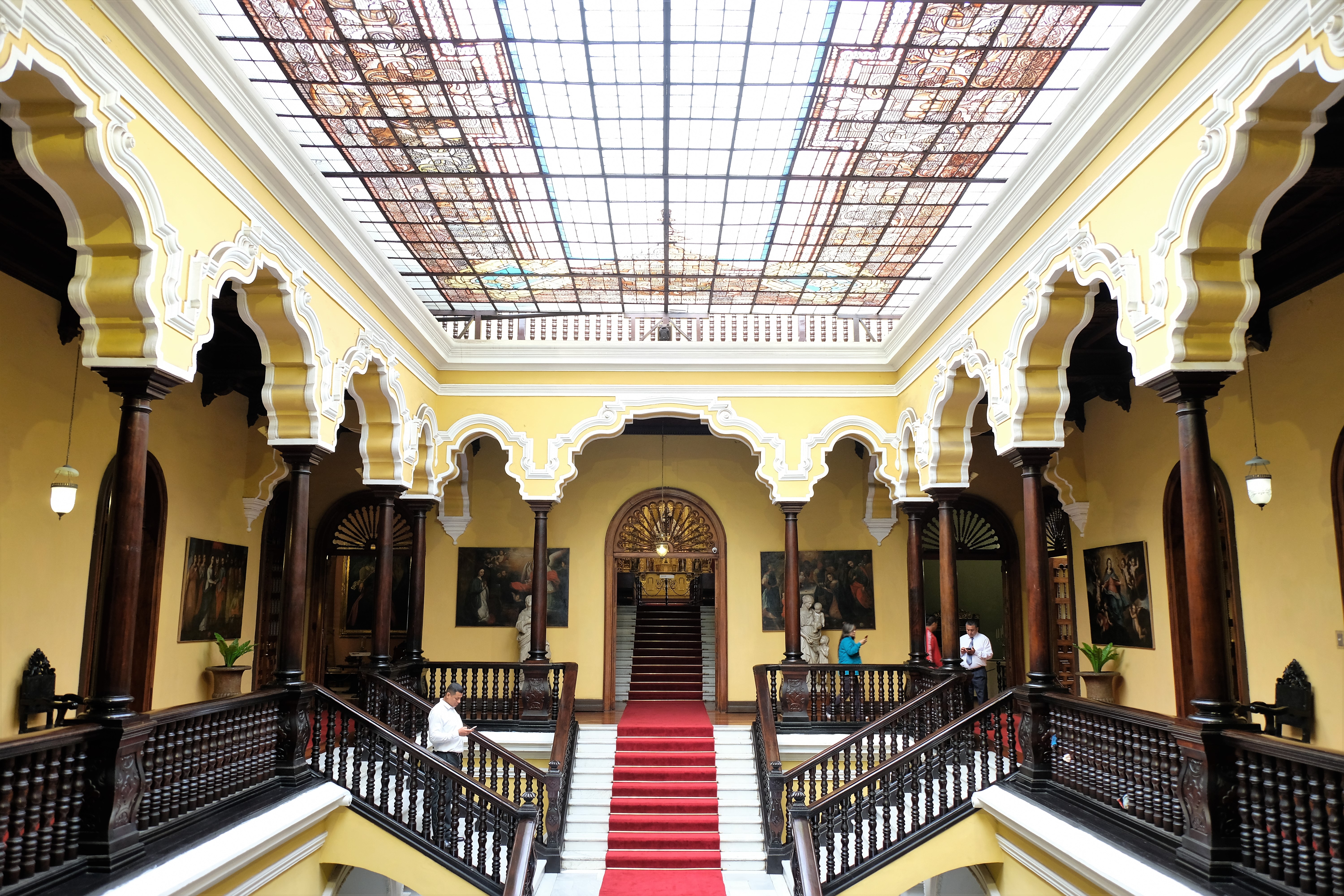
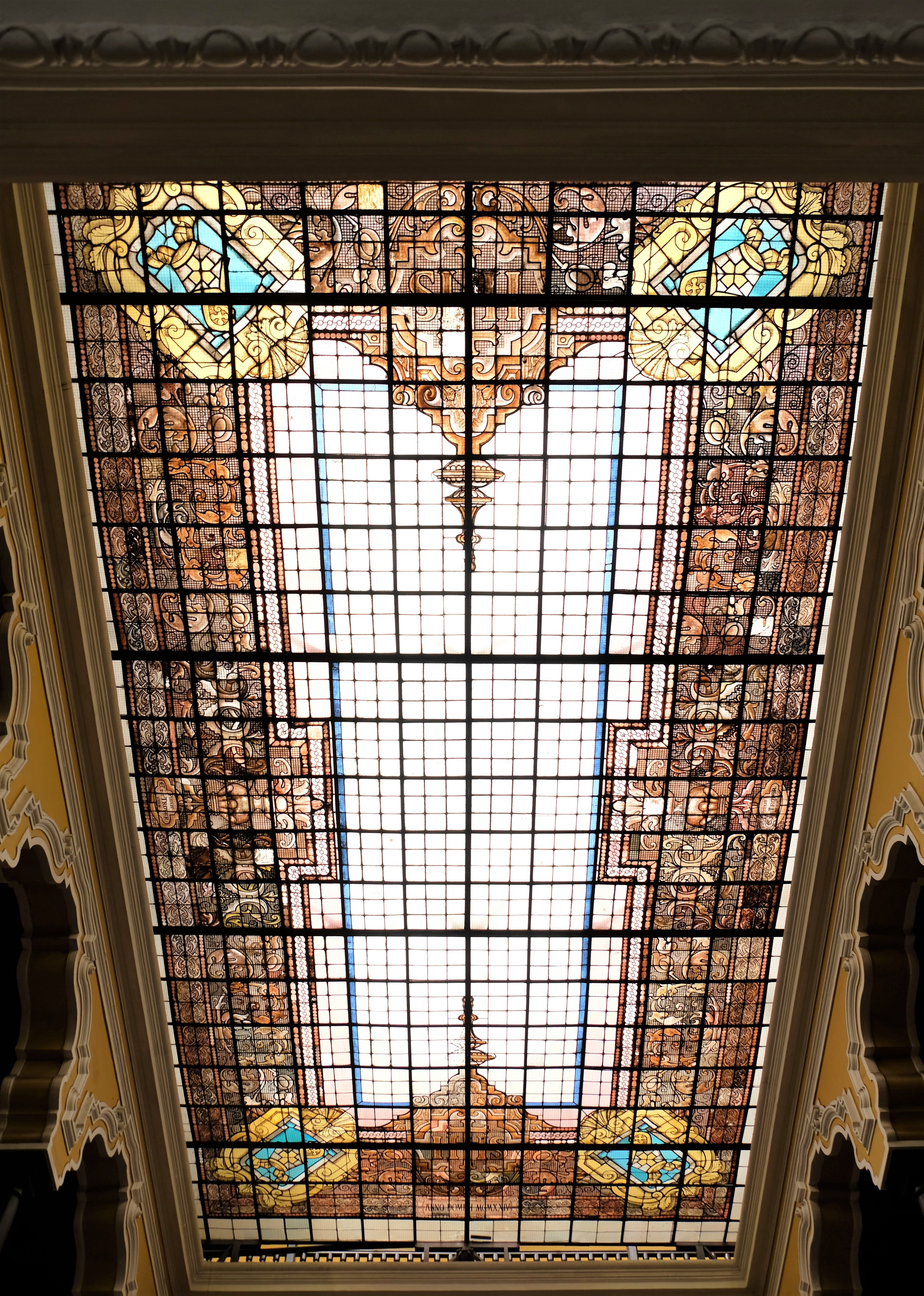
Basilica Cathedral of Lima / Lima Cathedral
It too has gone through many changes; not only because of earthquakes. However, the cathedral has been here since 1535, it’s first incarnation completed in 1649. Like the Archbishops Palace the exterior masks a light and airy interior, with more toned-down colours. The choir stalls that surround the main altar are up there with some of the best cathedrals I’ve seen; beautifully detailed craftsmanship. With the ceiling of timid blue and vaulted roofs geometrically lined with dusty golden architraves. The centre piece main altar quite understated with limited gold and what looks like opaque white marble.


Ossuary
Not always accessible in churches, the ossuary is predominantly used to bury the Bishops. Within the bowls of the ossuary are a few odd exhibits, whose explanation for there presence is now long lost. Far from being dark and damp, the ossuary’s white walls and floor are a contrast to its display. My guess is that it was painted in more recent times, because some of the older more recent finds have the earthlier colours of naked brick, concrete and dirt. Quite a few skeletal remains have been found, from a married couple, single burials and coffins containing small children and babies. Exactly who these people are is not longer known. Churches kept good records of who was buried within its wall’s, but these documents are lost.
If custom is the guide, to be buried within the church usually meant you were a priest, wealthy or of very high social standing. One of the displays, is a glass box with numerous skulls stacked on top of each other. Where they came from, who they belonged to, or where the rest of the skeletal remains are is not known. What I found most touching was the crypt full of young/child/baby coffins. These small plain boxes contain the dainty figures of such young people. The pride and joy of their parents still lying where they were laid to rest – here I am hundreds of years later looking at what they saw that final fateful day. Their baby’s death tearing through their hearts, now a tourist attraction – I’m not sure what to think about that.

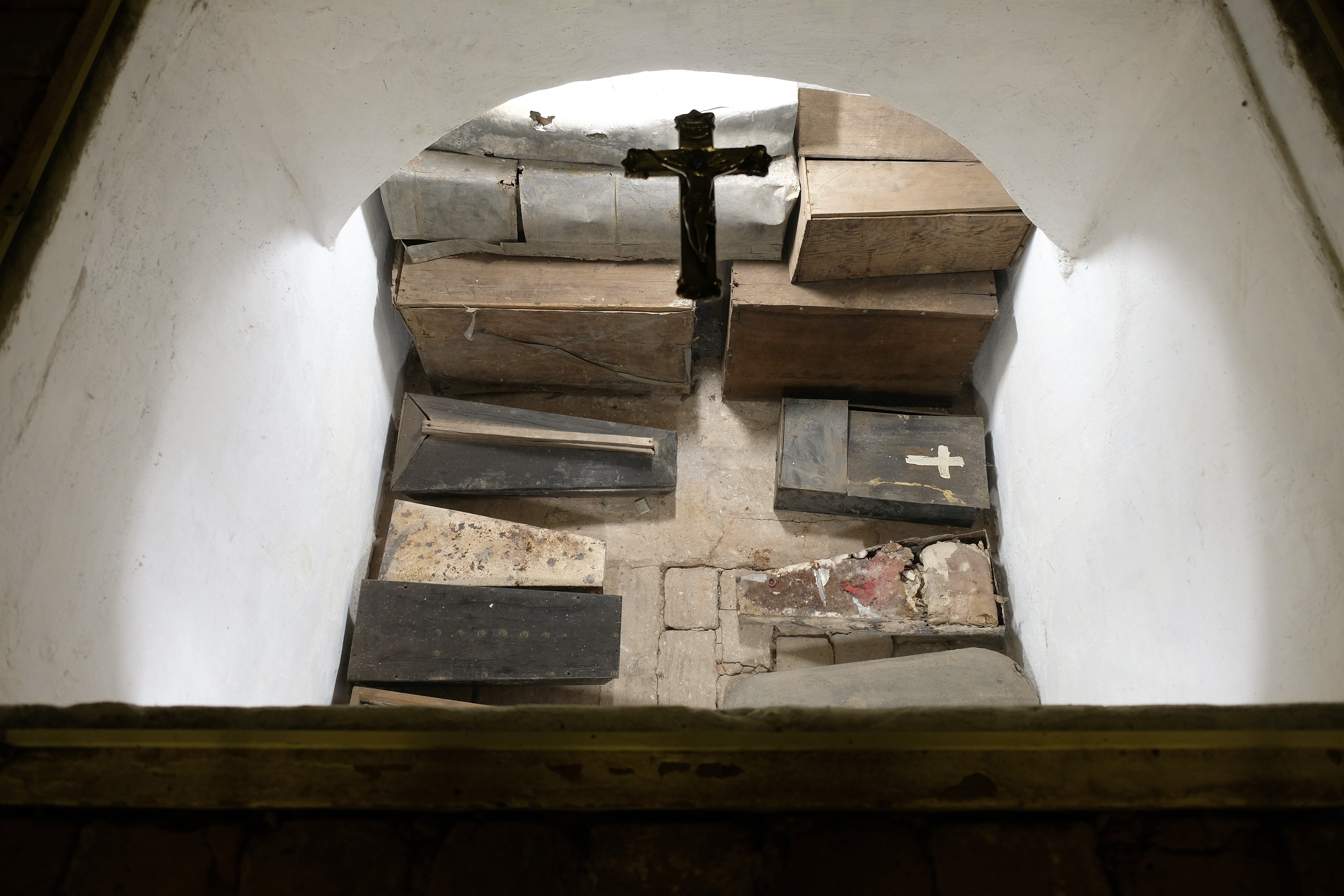
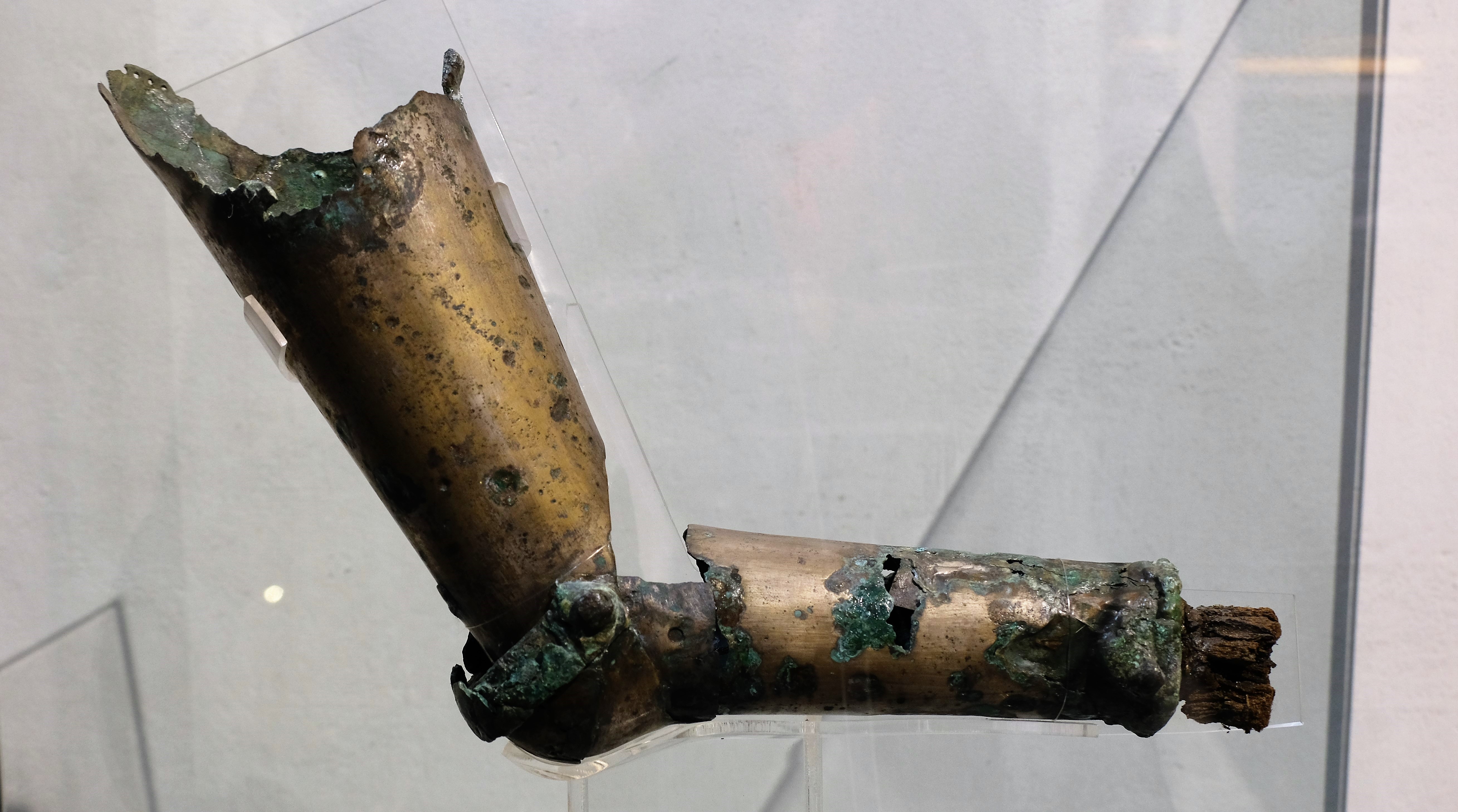
Plaza de Mayor / Plaza de Armas
I’ve already mentioned Plaza de Mayor a few times, it used to be called Plaza de Armas etc. Yes, it’s a focal point of the historic centre but also played a pivotal role in Lima’s history. From its inception in 1535 it was one of the biggest and most grand plazas in the Spanish empire, including within Spain. Lima became a city from expanding from its epicentre, Plaza de Mayor. Here public executions were held where gallows became the focal point in the centre of the plaza. It was also here that the Spanish Inquisition held tribunals, and where the first heretic was hung from the gallows. In the very least if the accused wasn’t hung, he/she would perform their public penitence here.
Plaza de Mayor is where the first public gas lighting in the city was installed; around its perimeter. Now, where the elegant water fountain takes centre stage is where the gallows used to stand. Being a bit morbid, if I went back in time, I’d be taking a photo of a hanging person or persons. Standing in the middle of Plaza de Mayor is where current Lima began…for all its good, bad and ugly past, this is where the current began.
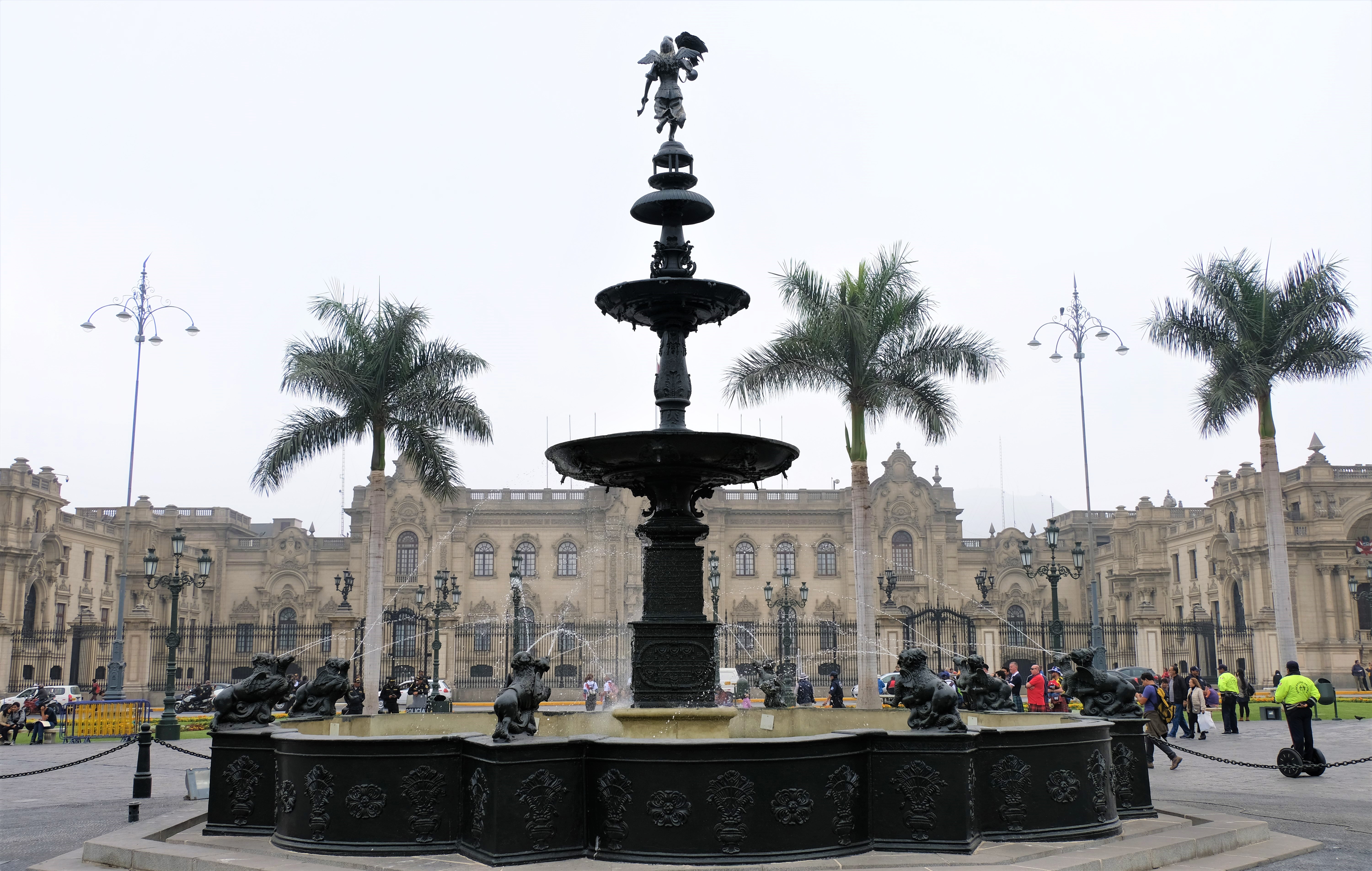
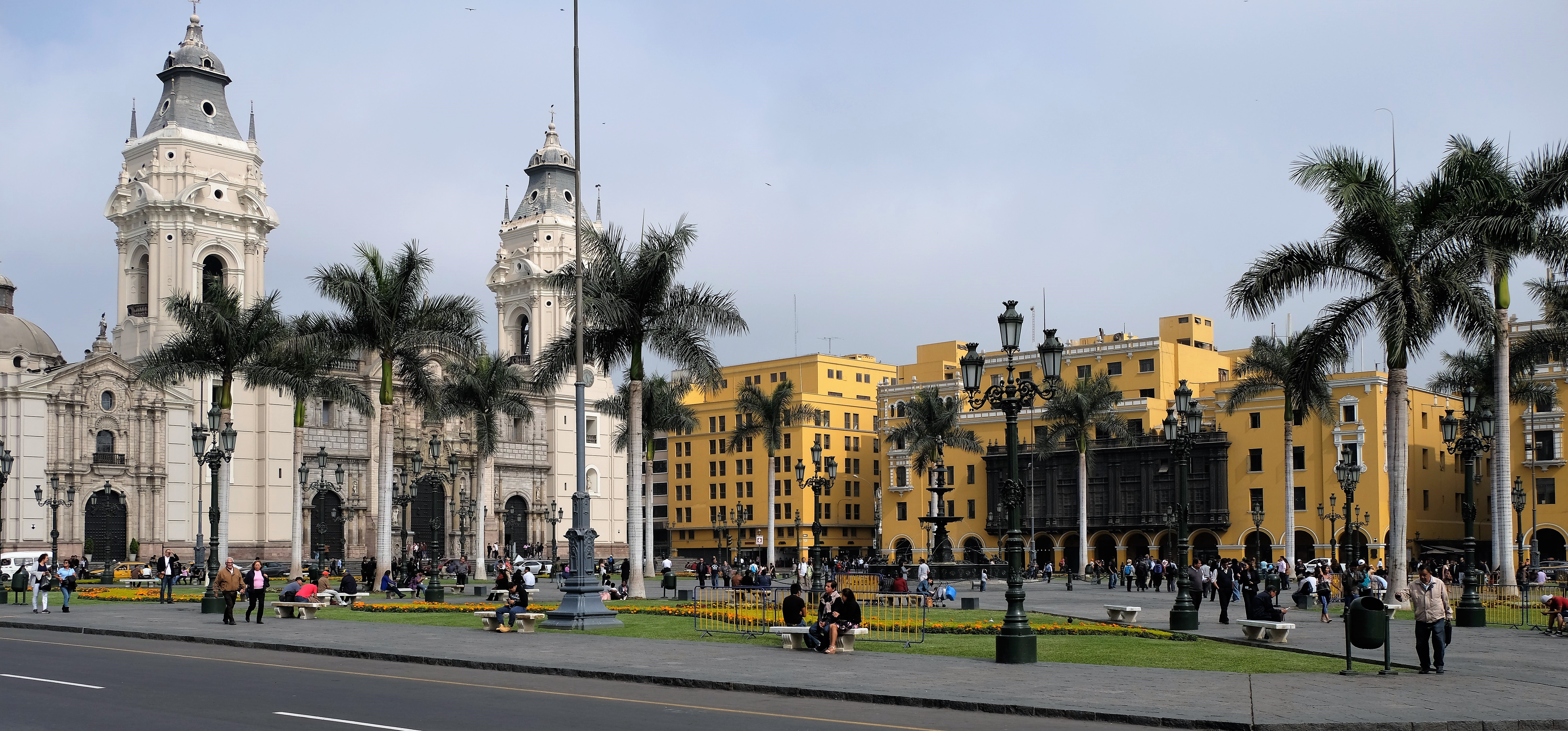
Sites I didn’t get to see i.e. go inside
- Basílica y Convento de San Francisco / Basilica and Convent of San Francisco – I was very keen to see the this, but when I got there the queue was at least 200m long. After standing inline for 30 minutes I had moved forward by a few steps. Needless to say, the queue was moving slower than a snail with a thorn in its foot! If the sun wasn’t scorching, I’d have changed my mind, but I’ve seen many churches/cathedrals/basilicas…missing one wouldn’t be the end of the world
- Palacio de Torre Tagle / Tagle Palace Tower – Not for want of trying, I really wanted to see Tagle Palace Tower unfortunately it is only open to the public on certain days – not the day I got there! Built in 1715 by Don José Bernardo de Tagle-Bracho y Pérez de la Riva, 1st Marquis of Torre Tagle (treasurer of the Royal Spanish fleet). No expense was spared in building it, with materials coming from Spain, Panama and Central America!
- Minor Basilica and Convent of Nuestra Señora de la Merced / Basilica and Convent of Nuestra Señora de la Merced – the oldest church in Lima, dating back to 1535. Its baroque exterior flanked by pastel peach-pink towers makes it impossible to miss. Closed when I was there, which didn’t stop me from spending a few minutes studying the entrance from outside.

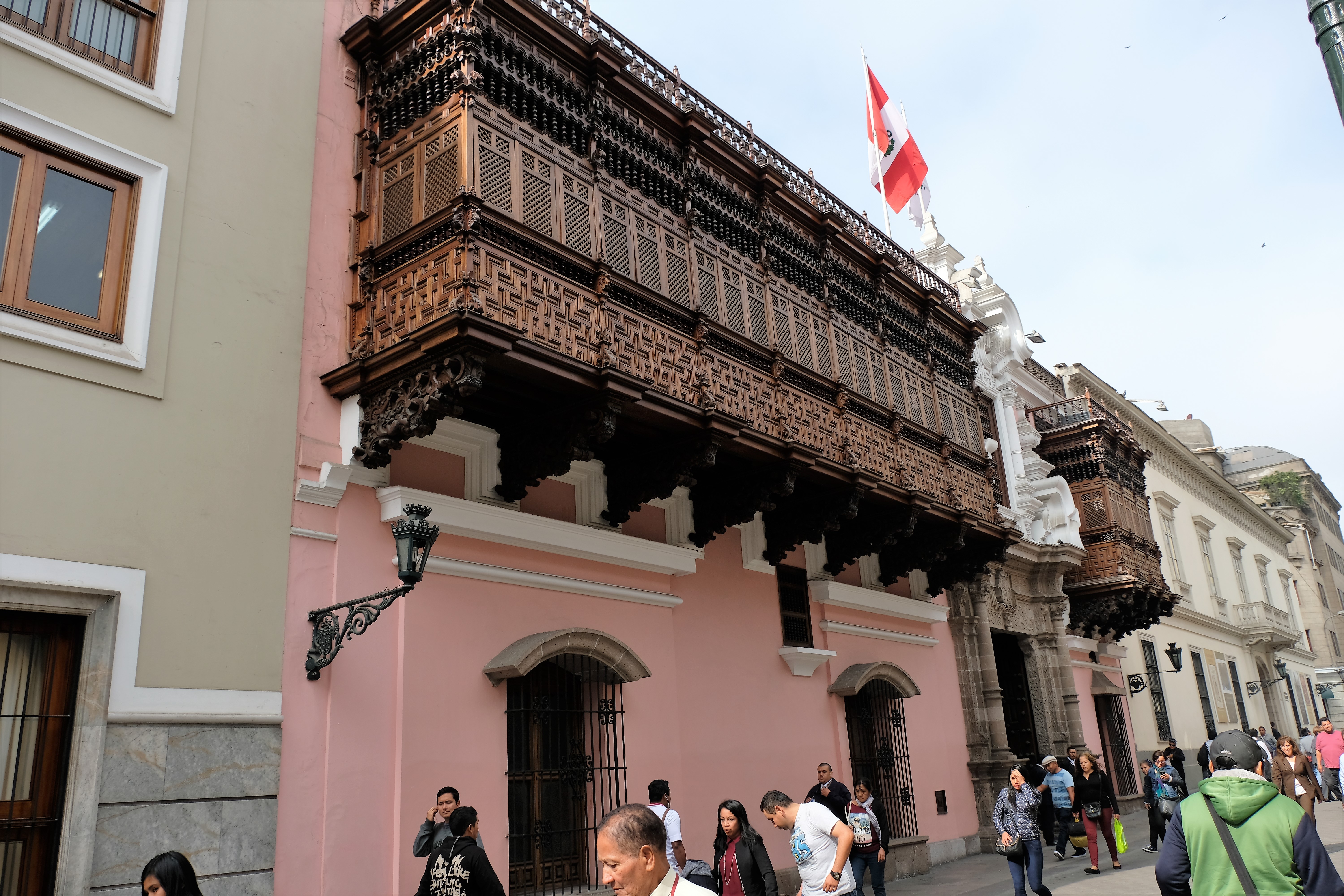
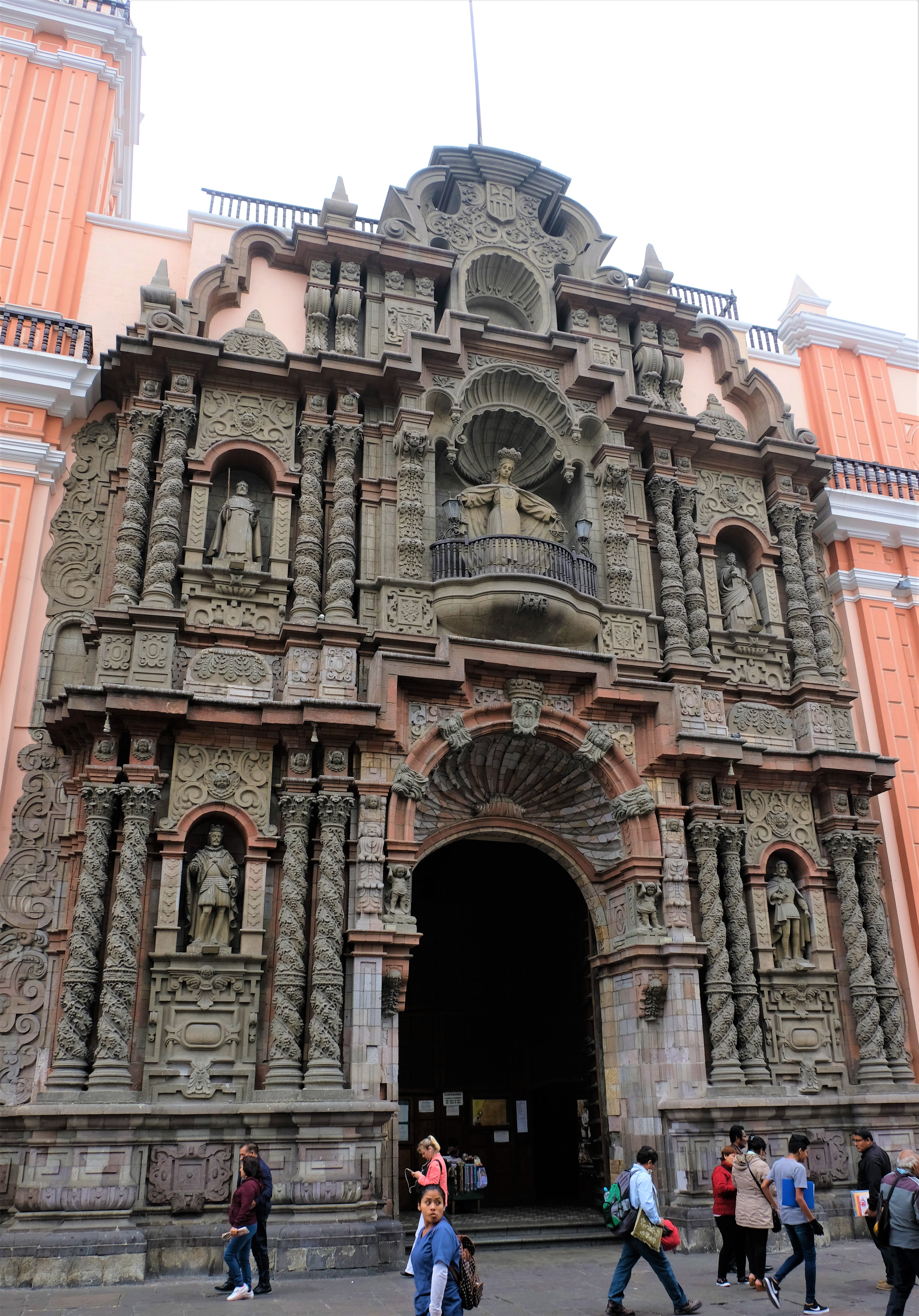
Cerro San Cristobal
Whilst wondering about the historic centre killing time before heading back to Miraflores, I ended up in Parque De La Muralla. Nothing special as a park, but up ahead was Cerro San Cristobal. A volcanic looking hill in the middle of what some refer to as Lima’s favelas – it’s not really. Having only been in Peru a few days, the place seemed very flat. Maybe Cerro San Cristobal was there as a reminder of what I would experience later during my time in Peru…and the hill ahead is only 300m above sea level – absolutely nothing compared to what I would encounter further down the line.
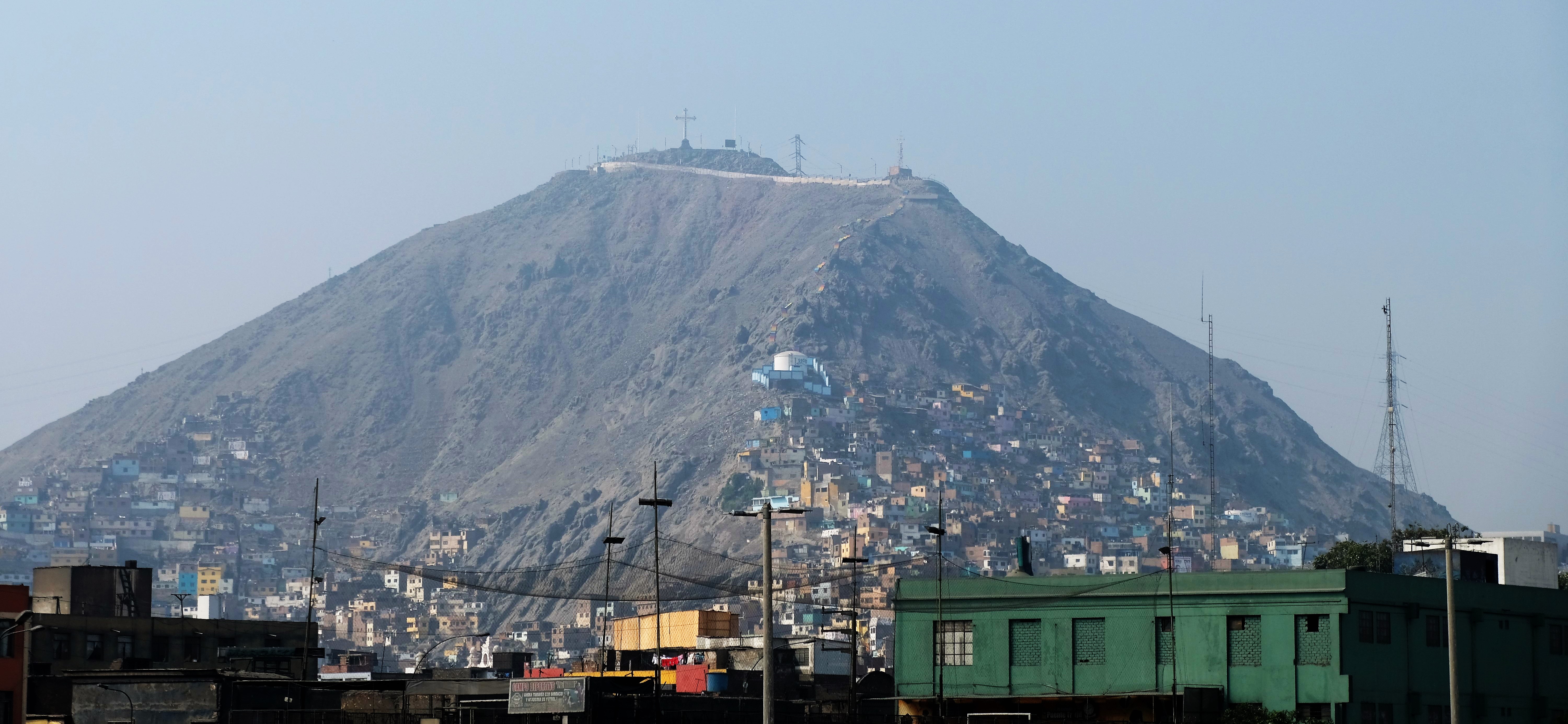
Before heading back to Miraflores I headed to a few parks I had seen on the way here. Park of the Exposition and Park of the Reserve. Both large public spaces with fountains and a few museums. I’ve wracked my brain and looks at my pictures but can’t remember which museum I went to! It’s bloody irritating! Anyway, it was enjoyable getting away from the tourist hotspots.
Looking back at it now, I should have given more time to exploring the Historic Centre of Lima. One of my days was wasted at my first accommodation, still very glad I moved. Honestly, with such a strong Spanish influence in structure, architecture etc. I lost interest in exploring more. My time in Europe, especially Spain had saturated my head with the creme de la crème of what Spain has to offer. Make no mistake, I loved my time in Spain. Peru to me is the Inca’s, that’s why I was here, that’s what I wanted to see. Yesterday’s visit to Huaca Pucllana was the start of that mission, tomorrow I’d add to that!
Posting my pictures
Once I’ve posted this I upload the photos (including additional pictures that didn’t make the blog post) two days later to my Batnomad Facebook page. Take a look, and you are welcome to share them or the blog – Thanks
